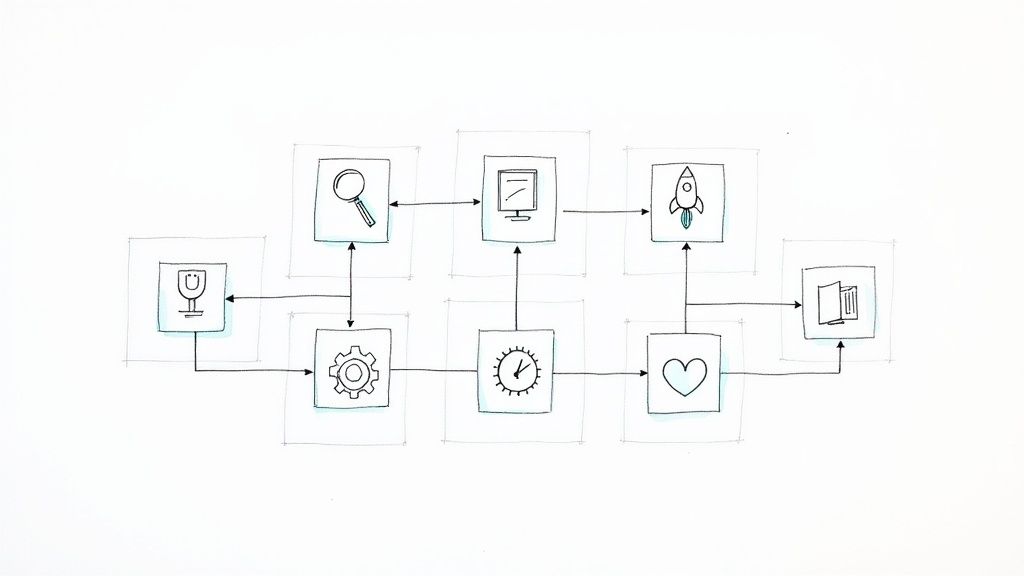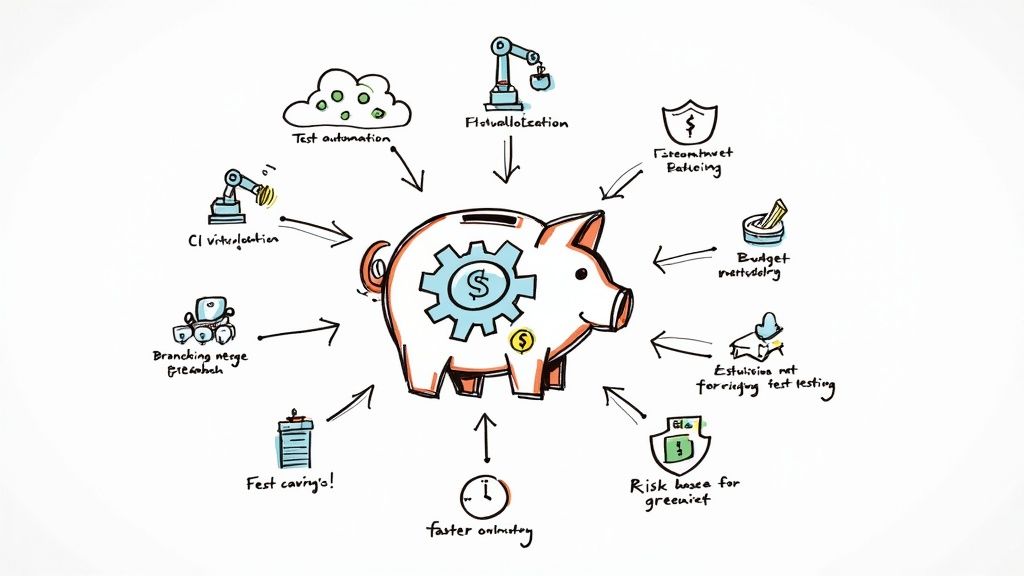Code Review Best Practices

Code reviews are a common practice in the software development world today and for a good reason. It’s essentially the manifestation of ‘better safe than sorry.’ However, following code review best practices can further optimize the process and help teams make the best of it.
Code review saves the development team time and effort by detecting problems early on. But the implications of this practice are more profound. Did you know a good code review can boost team morale and improve company culture?
What Is a Code Review?
Code review is the assessment of code by peers or superiors to recognize bugs, improve quality, and foster collaboration between team members. The practice was first adopted by engineers at Hewlett Packard, and now it’s a necessary part of development in many organizations.

There’s no one-size-fits-all methodology for code reviews, as there are different types of code reviews. The review standards and guidelines may vary greatly. Here are different types of code reviews:
- Code audits
- Inspections
- Management review
- Technical review
- Instant code review (pair programming)
Code Review Best Practices
Development teams should utilize code review to their advantage while adopting a code review mentality that respects others. Here are code review best practices to follow for code review optimization:
1️⃣ Define Code Review Goals and Objectives
Knowing what to achieve with the code assessment increases code review productivity and efficiency.
With a defined goal, the reviewer knows exactly what to look for in the code and the procedure to follow. It saves the reviewer’s time, as they focus on the goal and don’t spend time on unnecessary tasks.
2️⃣ Assign One or More Reviewers
Each code review requires a reviewer, often the team leader or repository maintainer. However, it doesn’t always have to be a single reviewer unless specified. Assigning peers to review the code can also be helpful.
With more than one individual reviewing the code, the chances of oversight of errors are smaller.
3️⃣ Create a Code Review Checklist
Creating a code review rubric is one of the most impactful code review best practices. This can be a checklist of questions that help guide the review process and ensure nothing is overlooked.
For instance, the checklist could include testing for different use cases and checking the code for security loopholes or reusability. Similarly, you could create a list of rules for ethical consideration in reviews.
Review rubrics and checklists can be standardized and tweaked for the project's unique needs.
4️⃣ Choose the Right Tool
To improve code review productivity, utilize the best tools available to you. Depending on the project size, assessing code can be laborious and time-consuming.
From queuing code merges on Git to automating the reporting of errors, these tools can accelerate the review process and enable streamlined feedback loops.
Ensure that the tools you use integrate well with your technology stack.
5️⃣ Establish a Code Review Process
Some code review red flags include a lack of review process consistency. While agile review processes are all the rage, ultimately, the process should reflect your organization and your development. In other words, it should be based on how you do things.
Having a process streamlines communication, defines roles, and eliminates confusion. It also helps with code review mentorship and training, as there’s clarity on the general coding procedures and practices. A code review process would also help when onboarding new talent.
6️⃣ Conduct Code Reviews in a Timely Manner
Consider this an extension of the last point. Have a process for code reviews that ensures that code is reviewed timely. Review delays wouldn’t help developers in time as they would have moved on to newer tasks and projects.
Reviewers should ensure they schedule and prioritize code reviews, especially those with higher dependencies.
7️⃣ Encourage Open Communication
Open communication in reviews is vital for producing positive results. This encourages collaboration and creativity, as ideas are discussed without hesitancy.
More importantly, open communication during code reviews creates a professional feedback culture where employees aren’t afraid to discuss their ideas or opinions.
While using constructive critiques in reviews, it’s imperative to maintain a positive tone. Remember, there’s a person behind that code, no matter how buggy it is!
Developing review diplomacy and etiquette may require education and training. So train developers and their heads on providing negative feedback subtly and diplomatically. Teach effective feedback techniques to make reviews more humane.
8️⃣ Improve Code with Feedback
Provide constructive feedback at the end of the code review that clarifies issues. Similarly, developers should use feedback to resolve errors or bugs and improve code quality.
9️⃣ Continuously Improve the Process
For continuous improvement in reviews, you need to improve the process consistently. In this regard, use code review metrics to evaluate the efficacy and productivity of your current process. For instance, how long it takes for a pull request to be merged may shed light on the efficiency of the code review process.
FAQs 🧐
What tools can be used for code review?
Various tools can help optimize the code review process for development teams. Teams can use tools that automate the workflow, improve code quality, deploy changes, notify stakeholders, and, most importantly, facilitate feedback and communication during code review.
How can we improve the code review process?
By following code review best practices, development teams can significantly improve the code review process. These practices include:
- Defining the review scope and goal
- Not reviewing too much code at once
- Using positive feedback techniques for communicating bugs or suggesting improvements
- Using a code review checklist
- Using metrics to analyze review effectiveness
How can we ensure that code review is efficient and effective?
Avoid reviewing more than 400 lines of code at a time to ensure the review is comprehensive and effective. Assessing too many lines of code in a single session can result in review fatigue and overlooking critical mistakes.
Conclusion 🥸
Code review best practices can ensure the development teams maintain a high level of quality and stick to the organizational standards. A code review mentorship can help instill the knowledge and techniques for effective team reviews.
If you’re not already using code reviews in your organization, it’s high time you did because it improves code quality massively and encourages teamwork. Also, use the best tools to make the code review process seamless.
Review your code using Mergify. Ready to get started? Sign up for your free plan today.





